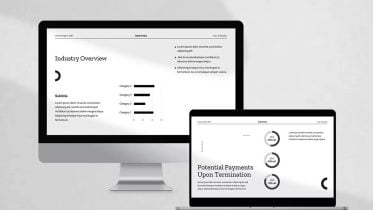
Knowing how to market your startup is just as essential as the actual product or service you’re offering. On the blog, we’ve talked about ‘8 Basic Etiquette for Powerpoint Presentations’ and how important they are in ensuring your data has an impact. Marketing for small businesses is the same way: without an effective strategy, you won’t be able to reach your market.
Thanks to the availability of technology, there are tons of different ways that startups can reach out to potential customers. The challenge is finding one that can bring in results without incurring too much cost. One of these methods is surprisingly traditional— startups can try direct mail marketing, which according to Small Business Trends has an average ROI of between 18 to 20%.
Direct mail marketing helps you target recipients precisely, make the most out of your mailing materials, and yields relatively high response and engagement rates when compared with other methods. Many of your competitors might not be using direct mail, and if they are they could be using it ineffectively, so it also provides ample opportunity to get ahead of the competition. The benefits of direct mail are vast, and if you’re a small business it could be especially beneficial. If you’ve been convinced but aren’t quite sure where to start, then here’s a quick how-to on putting together your own direct mail advertising campaign.
Identify What You’re Going to Do
The first thing you need to do before starting out on your campaign is determining what you’re going to be sending out. While direct mail is relatively inexpensive compared to buying a billboard, for example, it’s still important that you plan out your investment carefully. The Balance lists the different ways your business can use direct mail to get to customers, including sending out a catalog of your products, discount coupons and special deals, samples, or a newsletter. By determining what exactly it is you’re going to be sending out, and what the goal of your campaign will be, you’ll be better equipped to plan your target market and other materials.
Put Together a Mailing List
The next thing you’ll need to do is put together a mailing list. This could be where it gets a little tricky. Unlike a digital campaign, where potential customers only have to sign up their emails to a newsletter or website, a direct mail campaign requires a little more intensive work.
A post by Chron explains how to put together your direct mail list, and highlights the importance of using your resources to put together your list. This can include making use of internal sources, such as customer files from a previous business, or using external sources such as trade and association directories. Building an effective mailing list can take some time, but the ROI makes all the effort worth it.
Create Your Mailing Piece
After you’ve put together your mailing list, you’ll need to focus on creating what you’re going to send out. You’ll need to create a piece that’s effective and engaging, while ensuring that the messaging and directives of your campaign are on point. An article by Triadex Services on creating engaging mail pieces explains how to do this by presenting a list of things to keep in mind while constructing your mailing piece. This includes your campaign goals, your customer data, your main message, and the most attractive benefit that your company can offer customers. Direct mail offers businesses an opportunity to get creative with their materials, but you’ll need to study all the available data to make sure it’s effective.
Test Your Campaign
Because of the time and resources that go into creating a direct mail advertising campaign, it’s not something that you can just jump into blind. Once you have your materials and mailing list set up, the next thing you should do is test the effectiveness of your campaign. Doing a test run will help you determine the campaign’s strengths and weaknesses, and allow for adjustments before the main campaign period.Target Marketing Magazine has some advice on how to conduct a direct mail test, such as determining the type of test and identifying options on how to track results.
Analyze Results
Once your results for your test run are in, you can start analyzing the results. A feature by Entrepreneur Magazine has an easy primer for how to do this, and it mainly has to do with determining your break-even point. Once you’ve determined your ROI and your break-even, you can then start making a decision about your reach and your campaign frequency. Long gaps between campaigns may mean missed opportunities, but too-shorter gaps could lead to unprofitable close rates and declining response rates. You’ll also need to take into account your sample size, as response rates could differ depending on the scale of your campaign.
Prepare Your Budget
Finally, once you have all of the information you need, you can start planning out your budget. Direct mail campaigns, while relatively affordable, can still take up resources. You’ll need to pay for your printing costs, postage, manpower, possible revisions, and other expenses. Your testing process will have also helped you form an idea of the scale of your operations, and a larger mailing list will of course lead to increased costs. However, if you’ve conducted your testing process well and effectively, you’re likely to find yourself pleased with the ROI on your direct mail campaign.






